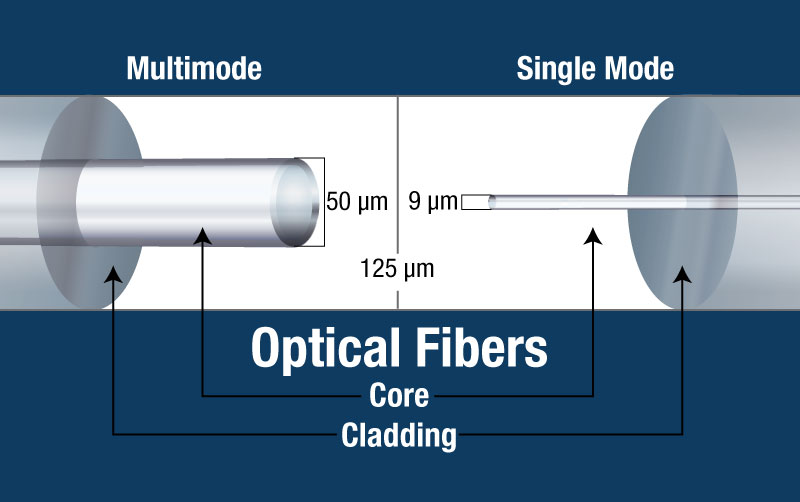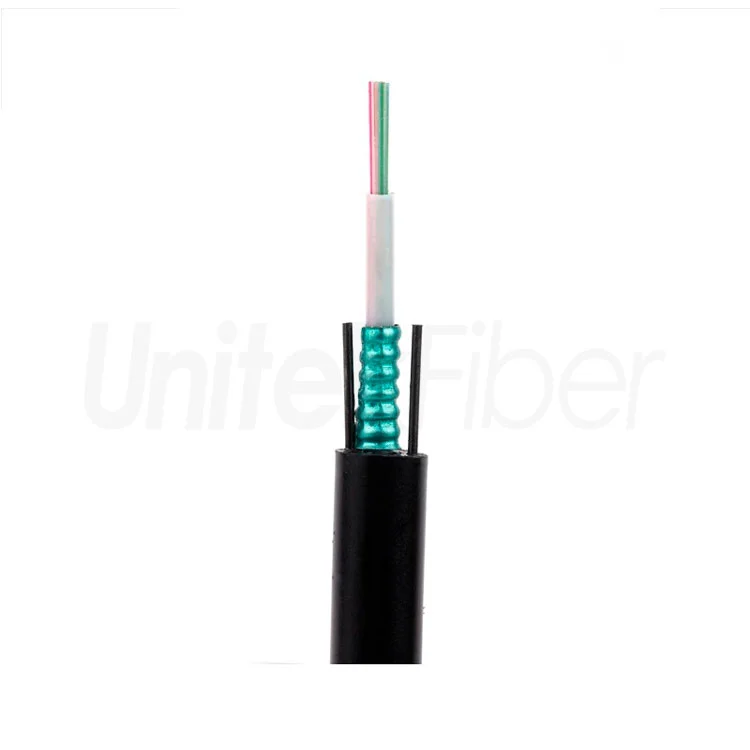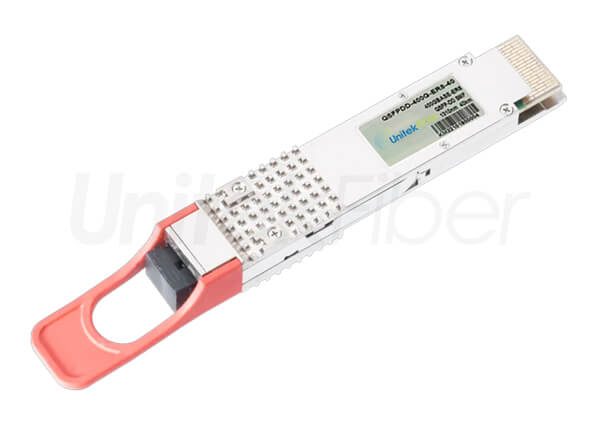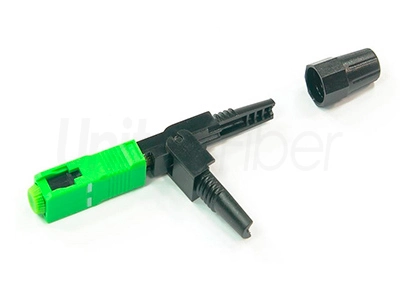
Basic structure of optical fiber
The bare fiber of optical fiber is generally divided into three layers: core, cladding and coating.

The optical fiber core and cladding are composed of glass with different refractive indexes, the center is a high refractive index glass core (germanium-doped silica), and the middle is a low refractive index silica glass cladding (pure silica). The light enters the fiber at a specific angle of incidence, and the total emission occurs between the fiber and the cladding (because the refractive index of the cladding is slightly lower than the core), so that it can propagate in the fiber.
The main function of the coating is to protect the optical fiber from external damage, while increasing the flexibility of the optical fiber. As mentioned earlier, the core and cladding are made of glass and cannot be bent and fragile. The use of the coating layer protects and prolongs the life of the fiber.
A layer of outer sheath is added to the non-bare fiber. In addition to protecting it, the outer sheath of different colors can also be used to distinguish various optical fibers.
Optical fiber is divided into singlemode fiber (Single Mode Fiber) and multimode fiber (Multi Mode Fiber) according to the transmission mode. Light enters the optical fiber at a specific incident angle, and full emission occurs between the optical fiber and the cladding. When the diameter is small, only one direction of light is allowed to pass through, which is a single-mode optical fiber; when the diameter of the optical fiber is large, light can be allowed. Inject and propagate at multiple incident angles, this time it is called a multimode fiber.
Optical fiber transmission characteristics
Optical fiber has two main transmission characteristics: loss and dispersion. The loss of an optical fiber refers to the attenuation per unit length of the optical fiber, in dB/km. The level of optical fiber loss directly affects the transmission distance of optical fiber communication system or the distance between relay stations. Fiber dispersion refers to the fact that the signal transmitted by the fiber is carried by different frequency components and different mode components, and the transmission speeds of different frequency components and different mode components are different, which leads to signal distortion.
Fiber dispersion is divided into material dispersion, waveguide dispersion and modal dispersion. The first two kinds of dispersion are caused by the signal not being a single frequency, and the latter kind of dispersion is caused by the signal being not a single mode. The signal is not a single mode will cause mode dispersion. Single-mode fiber has only one fundamental mode, so there is only material dispersion and waveguide dispersion, and no modal dispersion. The multimode fiber has inter-mode dispersion. The dispersion of the optical fiber not only affects the transmission capacity of the optical fiber, but also limits the relay distance of the optical fiber communication system.
Single mode fiber(SM Fiber)
Singlemode fiber (Single Mode Fiber), light enters the fiber at a specific incident angle, and full emission occurs between the fiber and the cladding. When the diameter is small, only one direction of light is allowed to pass through, that is, a singlemode fiber; The central glass core of the mode fiber is very thin, the core diameter is generally 8.5 or 9.5 μm, and it works at 1310 and 1550 nm wavelengths.
Multimode Fiber(MM Fiber)
The core diameter of multimode fiber is generally 50μm/62.5μm. Due to the core runoff of multimode fiber, different modes of light can be tolerated. There is also a new multimode fiber standard called WBMMF (Broadband Multimode Fiber). The wavelength used is between 850nm and 953nm.
Single Mode and Multimode Fiber patchcord

The cladding diameter of single mode fiber and multimode fiber is125m.
How to select the Single mode fiber or multimode fiber in different Application?
By Transmission distance
The smaller diameter of the single mode fiber makes the reflection tighter, allowing only one mode of light to propagate, so that the optical signal can propagate farther. As the light passes through the core, the amount of light reflection is reduced, reducing attenuation and causing further signal propagation. Because it has no inter-mode dispersion or small inter-mode dispersion, single-mode fiber can transmit 40 kilometers or more without affecting the signal. Therefore, single mode fiber is generally used for long-distance data transmission and is widely used in telecommunications companies and cable TV providers and universities, etc.
In multimode transmission, due to the size of the fiber core, the inter-mode dispersion transmission, that is, the optical signal "spreads" faster. The signal quality will be reduced during long-distance transmission, so multi-mode fiber is usually used for short-distance, audio/video applications and insertion (LAN), and OM3/OM4/OM5 multimode fiber can support high-speed data transmission.
By Bandwidth & Capacity
Bandwidth is defined as the ability to carry information. The main factors affecting the width of the optical fiber transmission band are various dispersions, of which the modal dispersion is the most important. The dispersion of the singlemode fiber is small, so it can transmit light in a wide frequency band for a long distance. Because multi-mode fiber will produce interference, interference and other complex problems, it is inferior to single-mode fiber in bandwidth and capacity. The bandwidth of the latest generation of multi-mode fiber OM5 is set to 28000MHz/km, while the bandwidth of single-mode fiber is much larger.
The Cost of Single mode fiber or multimode fiber
If single-mode fiber has higher bandwidth and longer transmission distance, why do you need multi-mode fiber? Cost may be the key to this problem. Because the core diameter of the single-mode fiber is too small, it is difficult to control the beam transmission, so a laser is required as the light source body. Since the optical transceiver is very expensive, the cost of using a single-mode fiber will be higher than that of a multi-mode fiber optic cable. This fact has prompted most data centers to use multimode fiber to save costs.
Which mode of fiber to choose depends more on the required application environment. UnitekFiber can provide various types of optical fiber jumpers. UnitekFiber is a professional manufacturer focusing on R&D, manufacturing, sales and service of optical communication passive basic components. The company’s main products are: optical fiber cable, Fiber optic patch panels, MPO/MTP trunk cables (high-density optical cables for data centers), wavelength division multiplexers, optical splitters and other three core optical passive basic components, which are widely used in fiber to the home, 4G/5G mobile Communications, Internet data centers, national defense communications and other fields.
Shenzhen UnitekFiber Solution Limited is a national high-tech enterprise focusing on R&D, manufacturing, sales and service of optical communication passive basic devices. The company’s main products are optical fiber patch panels, Fiber Optical Cable, Fiber Patchcord, WDM wavelength division multiplexers, PLC optical splitters, Optical transceivers and Industrial switches, and other optical passive basic devices that are widely used in fiber to the home, 4G/5G mobile Communications, Internet data centers, national defense communications and other fields.
If you need more information or support on fiber optical products, please don’t hesitate to contact us sales@unitekfiber.com, we will try our best to support you.



